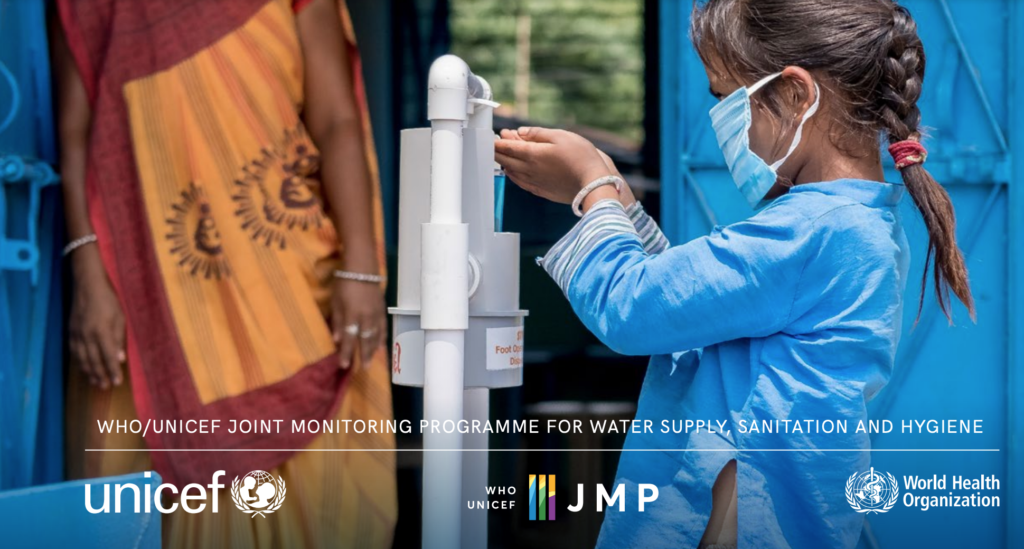by Linda Witong, Special Advisor to Advocacy.
In 2010 and 2017 the UN General Assembly adopted A/RES/64/292 and A/RES 72/178 in which it recognised the right to safe and clean drinking water and sanitation as a human right that is essential for the full enjoyment of life and all human rights. However, in December of 2019, in A/RES/74/141, the UN General Assembly expressed its deep concern that, almost 10 years after the adoption of the above Resolutions 64/292 and with only 10 years left to achieve the Sustainable Development Goals (SDG’s), 785 million people still lacked basic drinking water services and 144 million people still collected water directly from surface water sources, representing a combined 11 per cent of the world population, while 2 billion people still lacked basic sanitation services and 673 million people still practised open defecation, representing a combined 26 per cent of the world population.
Moreover, in 2019 it also expressed a deep concern that women and girls, especially in humanitarian emergencies and crises, armed conflict or natural disasters, still faced particular barriers in accessing water and sanitation, as well as menstrual hygiene management as well as continued to shoulder the main burden of collecting household water where they faced risks arising from waterborne diseases, sexual and gender-based violence, harassment and other threats to their safety while collecting household water, accessing sanitation facilities outside their homes or when practising open defecation and urination; all of which limited their ability to move freely and safely in the public as well as restrict their time for other activities, such as education and leisure or earning a livelihood.
![]() In 2020, the sad reality was presented in the 2020 WASH Report regarding the Progress On Drinking Water, Sanitation and Hygiene in Schools with a Special focus on COVID-19. That report acknowledged that, in order to achieve universal access by 2030 , it would still require a seven-fold increase in the current rate of progress on drinking water, a five-fold increase in the rate of progress on sanitation, and a four-fold increase in the rate of progress on hygiene. The world’s mission to achieve the goals of SDG took on an increased sense of urgency; we did not have a minute to lose.
In 2020, the sad reality was presented in the 2020 WASH Report regarding the Progress On Drinking Water, Sanitation and Hygiene in Schools with a Special focus on COVID-19. That report acknowledged that, in order to achieve universal access by 2030 , it would still require a seven-fold increase in the current rate of progress on drinking water, a five-fold increase in the rate of progress on sanitation, and a four-fold increase in the rate of progress on hygiene. The world’s mission to achieve the goals of SDG took on an increased sense of urgency; we did not have a minute to lose.
However, the COVID-19 pandemic had other plans for our world and upon its arrival, it triggered an unprecedented global health and economic crisis, which has affected all countries and underlined the importance and urgency of implementing WASH, especially hygiene, in households, schools and health care facilities for reducing the transmission of infectious diseases and protecting global health.

Progress on drinking-water, sanitation and hygiene in schools | Special focus on COVID-19 | 13 August 2020 | Situation report
As a result of this pandemic by June of 2020, 191 countries had implemented school closures to control the spread of COVID-19, affecting 90% of students worldwide (1.57 billion). However, the world faced a dilemma as global school closures in response to the COVID-19 pandemic were threatening to reverse recent gains in enrolment, retention and graduation, with life-altering consequences for millions of children worldwide including a unprecedented risk to children’s education and wellbeing and a disruption of school-based services essential for the nutrition, health, welfare and protection of vulnerable children.
In order to avoid such a catastrophic impact on children and young people, WHO, UNICEF and other entities offered guidelines on COVID-19 infection prevention and control in schools to identify a range of measures that needed to be in place for schools to reopen and operate safely . These measures included highlighting the importance of providing sufficient hand washing facilities in key locations around the school and ensuring they are well maintained, promoting changes in hygiene behaviour, and practising group hand washing at critical times. To meet the criteria for a basic hygiene service, the schools were to have at least one hand washing facility with water and soap available, but even that would not be sufficient to ensure school safety during the COVID-19 pandemic. Protocols for the safe operation of schools during COVID-19 recommended providing hand washing stations at the toilets, playground and canteen, as well as next to classrooms and school entrances and exits. They also recommended that all schools, ensure daily disinfection and cleaning of surfaces, provide basic water, sanitation and waste management facilities, and follow appropriate environmental cleaning and decontamination procedures. According to the above 2020 WASH Report the COVID-19 pandemic also highlighted the need to accelerate progress on WASH and the additional goals stated above
The urgent need to comply with the above protocols will pose a major challenge to many countries as, in the 60 countries identified as having the highest risks of health and humanitarian crisis due to COVID-19, one in two schools lacked basic water and sanitation services and three in four lacked basic hand washing services at the start of the pandemic. In addition, there were often big differences between the proportion of schools with access to one of these WASH services and the proportion with access to all three WASH services. The COVID-19 pandemic also further underlined the importance of providing safe and effective learning environments and led to renewed calls to accelerate the upgrading of school infrastructure so schools can reopen and operate safely. However, upgrading all the aspects of school infrastructure required for a safe and inclusive learning environment presented an even bigger challenge. According to the above report, currently available data suggest that while many schools already meet some of these criteria, relatively few schools meet all of them.
Only a third of countries had recent estimates for all seven elements of school infrastructure. In addition, while almost all countries had estimates for access to electricity, computers and the internet, only half had estimates for adapted infrastructure and materials for students with disabilities. Four out of five had estimates for basic water and basic hygiene and three quarters had recent estimates for basic sanitation Moreover, according ot the report, many countries do not yet routinely monitor all the aspects of school infrastructure specified in SDG 4.a.1. For example, while many countries routinely collect information on access to WASH, relatively few have national data on cleaning and disinfection or waste management in schools. For example, in a recent environmental health assessment in Tunisia, 18.5% of primary schools reported lacking sufficient equipment, cleaning products, disinfectant or staff for cleaning and disinfection. Another example included the Education Management Information System (EMIS) in Ethiopia includes questions on waste management and shows that a third of primary schools nationwide and over half of primary schools in the Afar and Somali regions lack adequate waste disposal. This illustrates the scale of the challenges associated with safely reopening schools in many parts of the world.
In addition, while the basic service indicators are universally relevant, they do not capture all aspects of WASH services that are important for the health and well-being of students and staff such as, for example, those who are disabled or women or girls’ need for equal and safe access to WASH as well as their menstrual and specific sanitary needs. In addition, ongoing efforts to upgrade WASH services in schools in response to COVID-19 need to target those countries and populations with the greatest needs as well as the most disadvantaged group of all who are the 256 million children around the world who were estimated to still be out of school at the end of 2019.
Accelerating progress in countries with the lowest coverage of WASH in schools is critical to improve school safety during the COVID-19 pandemic and beyond. States must also seize the opportunity to build back better, establishing and sustaining a culture of hygiene across all levels of government and society.
Full report can be viewed HERE


What can we do to improve this situation? I’m assuming that targeted gifts of cash would be welcome and useful.